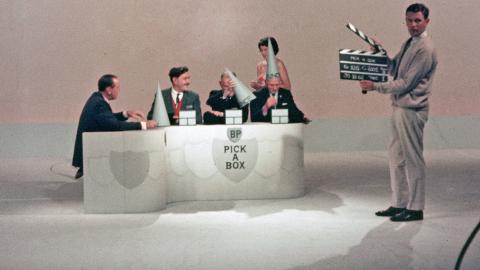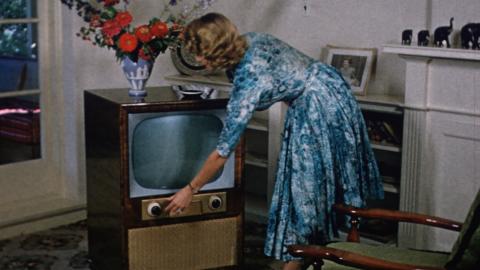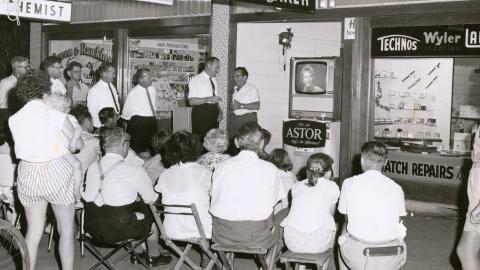
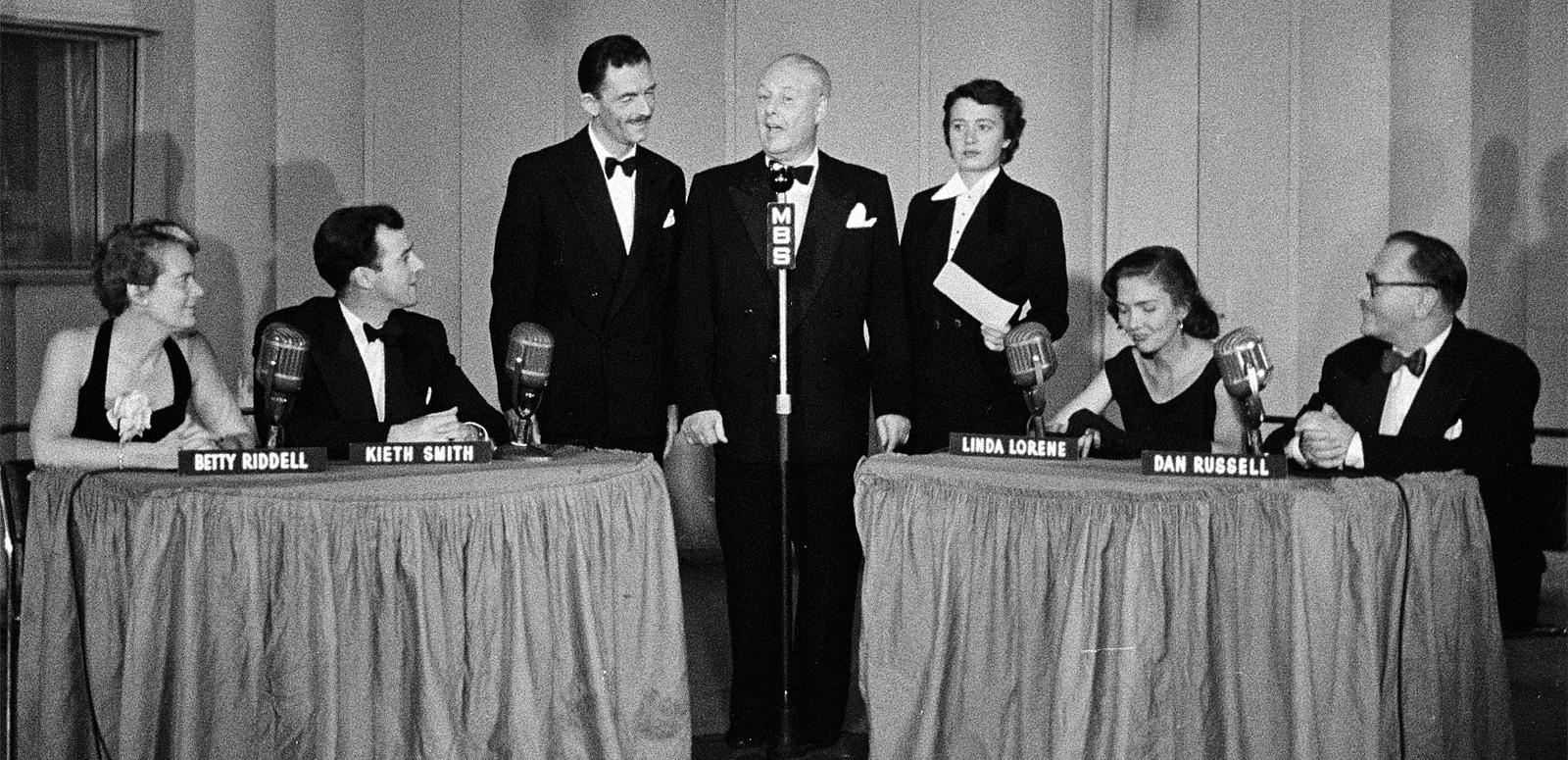
Australia’s First TV Game Show
Ask Me Another: Australia’s First TV Game Show
For the 2021 World Day for Audiovisual Heritage, the NFSA is sharing a publicly unseen 1953 game show pilot titled Ask Me Another, hosted by Jack Davey, Australia’s biggest radio star of the era. The pilot has strong claims to being Australia’s very first television game show production.
‘They Think I’m Colossal!’
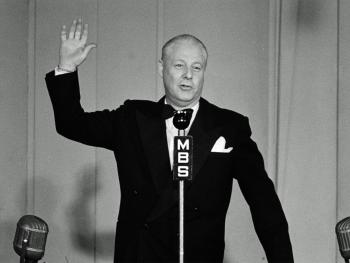
To his legion of listeners, he was Mr Radio. Jack Davey was to Australian radio broadcasting in the 1950s what Graham Kennedy later became to local television audiences.
The New Zealand-born singer had arrived in Sydney in 1931 and quickly became a popular media fixture with an extraordinary ability for verbal interplay. By 1953 he was at the top of his game, hosting 5 radio shows a week to an estimated national audience of 5 million listeners across the Macquarie Broadcasting Service. Yet a new visual medium was fast approaching and, by chance, ‘Dynamo Davey’ became a central player in an historic Australian television production, one publicly unseen … until now.
The Unseen Pilot
Never publicly screened since its creation in 1953, you can view the complete Ask Me Another television pilot here:
Pilot episode of Ask Me Another (1953). Courtesy Nine Radio and Cinesound Movietone Productions. NFSA title: 510833.
The first Australian TV game show?
With the impending arrival of television into Australia and the Menzies government's Royal Commission on Television in 1953 inviting select stakeholders for comment, Charles Ogilvy – the Managing Director of Macquarie Broadcasting Service – saw an unmissable opportunity to leap frog his competition. Determined to showcase a successful and innovative company, Ogilvy hastily organised for Fox Movietone’s cameras to record one of their radio programs that featured his highest profile employee, Jack Davey.
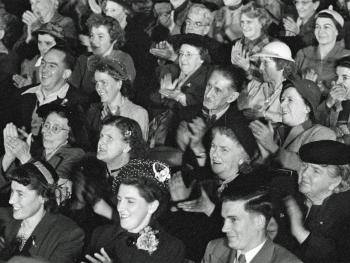
On Tuesday 30 June 1953, the live audience at 2GB’s Macquarie Auditorium in Phillip Street, Sydney unknowingly found themselves part of Australian television history. 'We have made a film of one of our Jack Davey shows to show how many of our present programs are adaptable to television. This film was made quickly and cheaply and will be ready for screening on Friday', Ogilvy trumpeted to The Argus the following day. The film in question had been created during the recording of episode 164 of Ask Me Another.
Ask Me Another commenced on radio in March 1950. In each episode, a panel of 4 personalities sought to uncover a phrase that was either animal, vegetable or mineral, within the allocated 20 questions. Prizes were awarded both to listeners sending in their suggestions, and other contestants on stage if the panel failed to match the phrase.
Ask Me Another ran for 5 years on radio but of the 262 episodes produced, only a handful survive today. The NFSA holds only portions of 4 episodes (episodes 116, 117, 234 and 235) from 2 surviving discs. However, we hold production paperwork for the complete series.
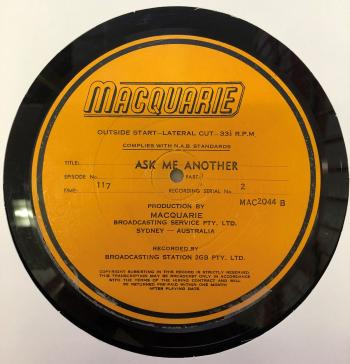
The surviving 35mm black-and-white composite film negative of the television pilot episode arrived unidentified at the NFSA as part of the vast Cinesound Movietone film collection in the early 1990s. A chance discussion with television historian Chris Keating led to further investigations by NFSA curators. We recently were able to confirm the film’s contents after completing a superb new 4K digital preservation file master.
Radio With Pictures
On Friday 3 July 1953, what was most likely Australia’s first TV game show pilot was privately screened to perhaps only 5 Commissioners in Sydney, as part of Macquarie’s submission. As television historian Albert Moran noted in 1991, what those in attendance made of this economical production remains unknown (beyond likely raising a few laughs). Within the 3 games condensed into the film’s 12-minute running time are examples of Davey’s natural comedic timing and ease with handling any comment thrown his way by the guest panellists (see image gallery below).
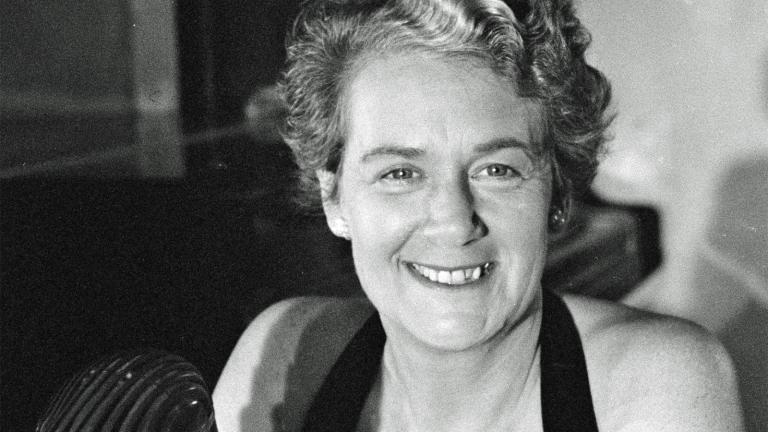
Ask Me Another panellist Betty Riddell. Image courtesy Nine Radio and Cinesound Movietone Productions. NFSA title: 510833.
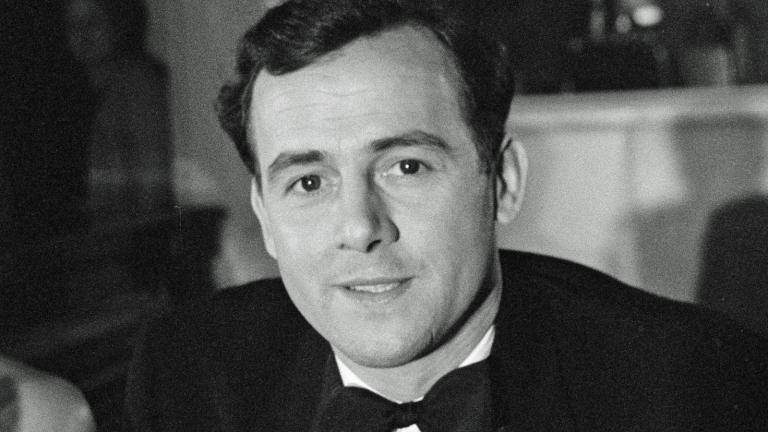
Ask Me Another panellist Keith Smith. Image courtesy Nine Radio and Cinesound Movietone Productions. NFSA title: 510833.
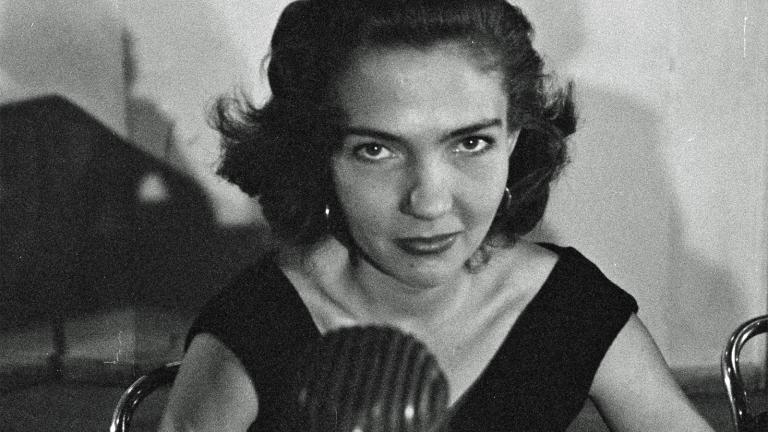
Ask Me Another panellist Linda Lorene. Image courtesy Nine Radio and Cinesound Movietone Productions. NFSA title: 510833.
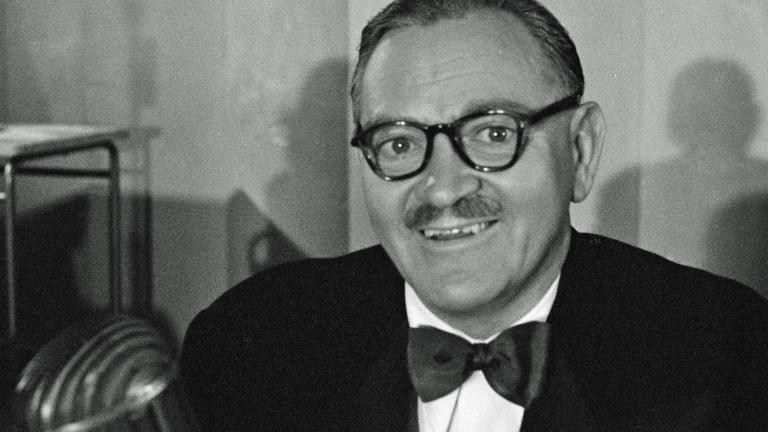
Ask Me Another panellist Dan Russell. Image courtesy Nine Radio and Cinesound Movietone Productions. NFSA title: 510833.
For this occasion, Davey’s panel consisted of Daily Mirror journalist Elizabeth ‘Betty’ Riddell, writer Keith Smith (who later devised the popular radio and TV show The Pied Piper), French-born Australia’s Amateur Hour contestant Linda Lorene and newspaper cartoonist Dan Russell. Also seen are announcer David Low and assistant Joan Scahill.
A mocked-up advertisement for the show’s main sponsor, Eno Fruit Salts – produced without a soundtrack and featuring fellow 2GB personality Keith Walshe hamming it up for the camera – was also included for demonstration purposes.
The haste in which the production was completed is evident. Still in pristine condition, the 35mm film contains no titles, credits or visible captions. Sound mixing was only cursorily undertaken with the silently filmed cutaways of the audience, panellist close-ups and the Eno advertisement making for a jarring viewing experience. Even panellist Keith Smith’s name plate has an obvious (intentional?) spelling mistake!
‘Good night and thanks for looking!’
Though ultimately unsuccessful in obtaining a precious Sydney TV licence, Macquarie initially followed through with their interest in adapting their radio shows for television. In February 1957, only months into regular television broadcasting in Australia, an ailing Jack Davey found himself fronting the cameras of ATN7 for 3 of his radio shows: Give It A Go, The Dulux Show and The Pressure Pak Show. However, none were successful. Only The Pressure Pak Show – a reworking of the Ask Me Another format – survived into 1958.
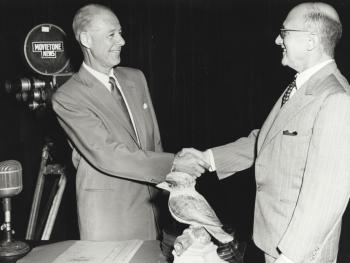
Diagnosed with lung cancer in June 1959, 'Dynamo Davey' refused to let his condition slow him down. He continued to schedule hundreds of engagements in his final year across radio, film, charity events and newsreel narration duties, the latter as the voice of Movietone News editions for 25 years. Unquestionably Australia’s greatest radio star, Davey's passing at age 52 on 14 October 1959 was a national news story.
As more than 100,000 mourners stood in the Sydney rain to pay their respects, symbolically his passing also marked the end of one medium’s supremacy and the rise of its televisual successor.
Thanks to Jamie Kelly, Alex Hehr OAM, Glenn Eley at Cinesound Movietone Productions and Nine Radio. Special thanks to Australian television historian Chris Keating for bringing this pilot to the attention of the NFSA.
Main image courtesy Nine Radio and Cinesound Movietone Productions. NFSA title: 510833.
The National Film and Sound Archive of Australia acknowledges Australia’s Aboriginal and Torres Strait Islander peoples as the Traditional Custodians of the land on which we work and live and gives respect to their Elders both past and present.
